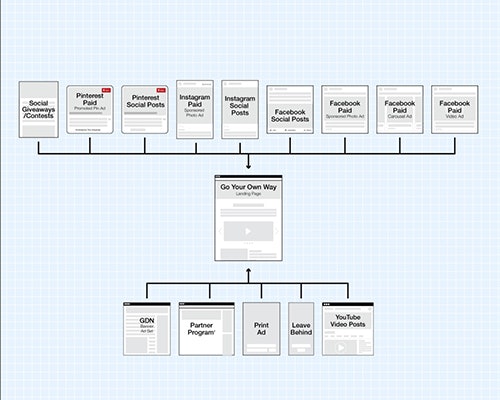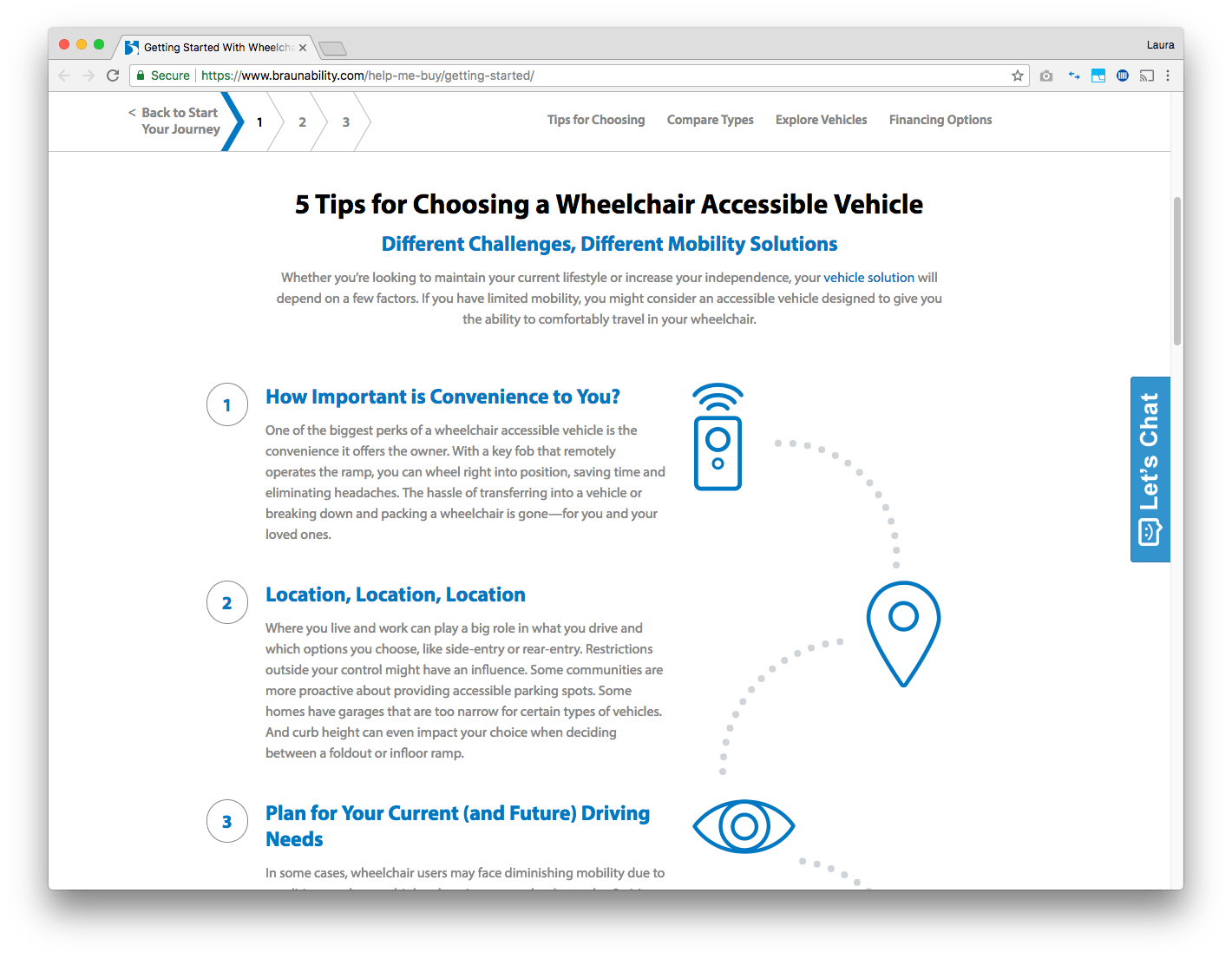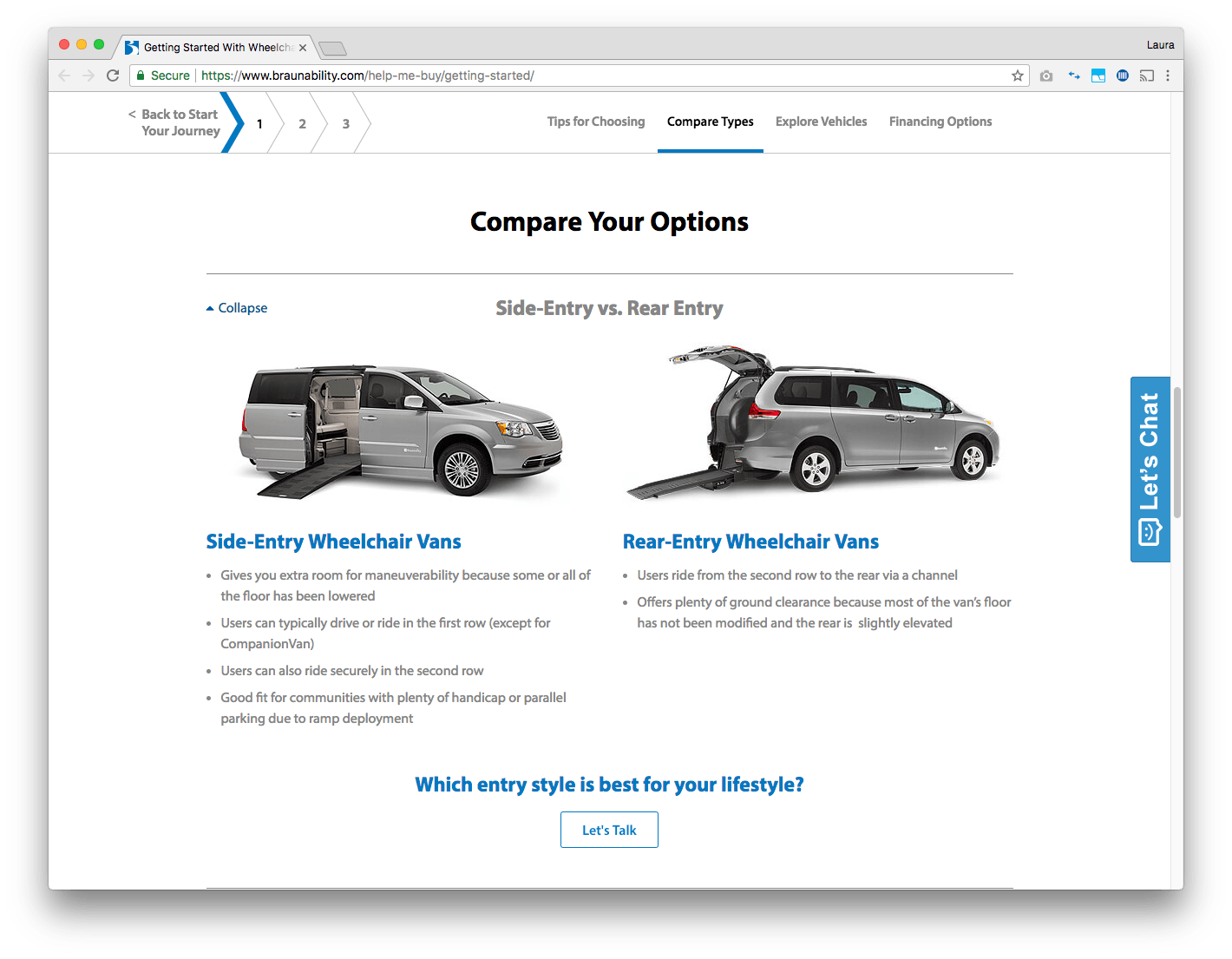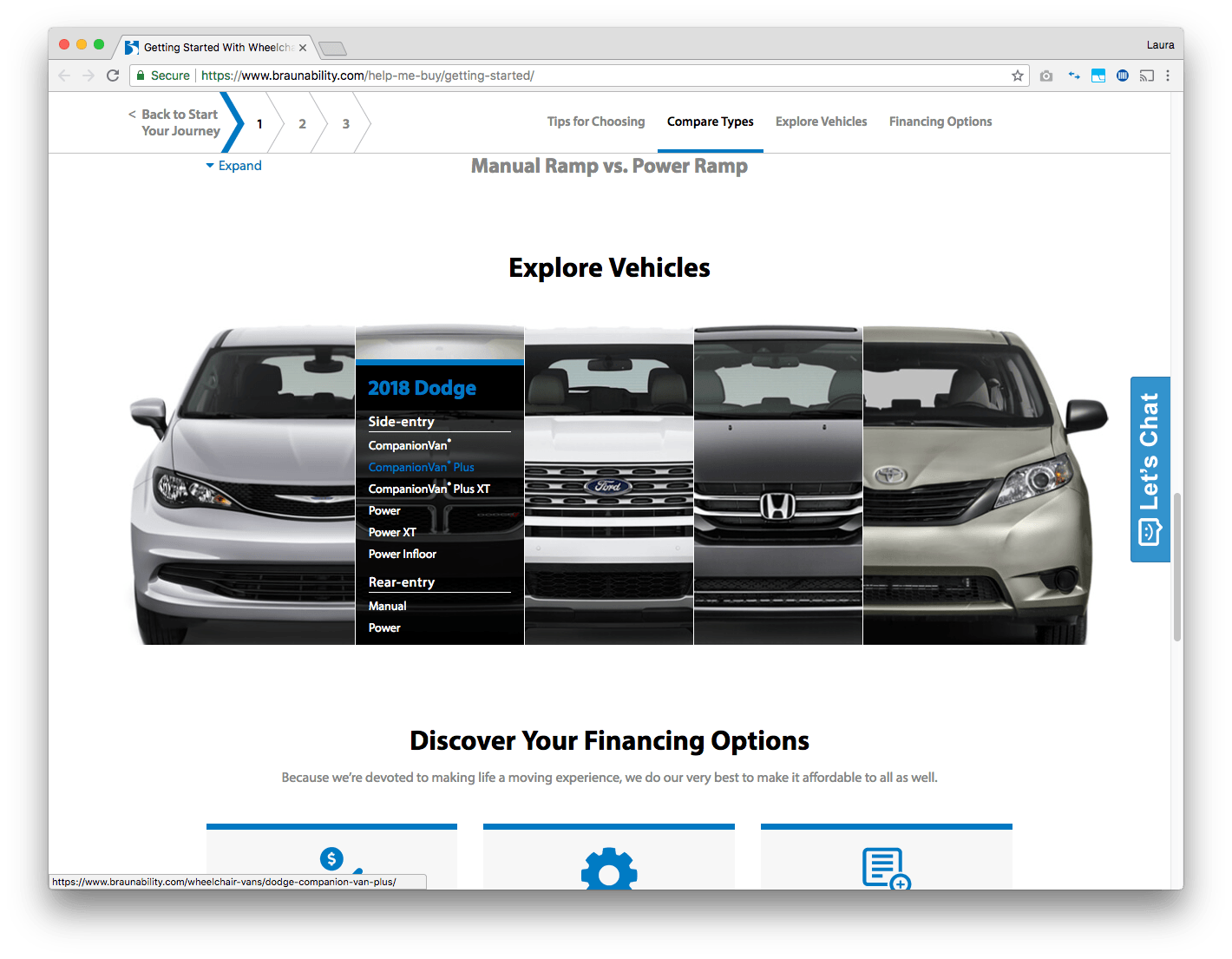Creatives communicate through clear visuals and storytelling; we’re typically identified as right-brained thinkers. Digital strategists research, analyze, and manipulate data, activities of the left brain. Just because these traits are associated with these departments, however, does not mean digital strategists aren’t creative and creatives give no thought to reporting and strategy. In fact, most effective web designers and strategists are constantly crossing the line between allure and analytics. When you combine the targeting of digital with the appeal of creative, work doesn’t just reach the correct audiences, it also inspires them to act.
But this isn’t always easy to do. Creatives may shy away from scenarios that require tangible, quantifiable proof for good reason. It’s hard to calculate and analyze such invisible motivators as emotional connection to another human, or empathy felt while watching a beautiful story unfold. These aspects of life and art are inherently subjective. But according to global consulting firm McKinsey, “…the notion that creativity and data are adversaries is simply outdated.” Creatives should consider digital strategy a roadmap to get in front of the right audience, and a blueprint for what to do once you get there. At the end of the day the common goal is to appeal to audiences on their turf, and digital strategy allows creatives to do just that.
Though creative teams want to protect the “unprogrammed” part of their process, a large part of creative development involves a thorough understanding of a target audience and the environment. Adobe hits the nail on the head in a 2017 article, stating: “Creative teams crave information. And the best creative solutions are formed when they have access to the right information like demographic, psychographic, or other audience insights.”
So what might this actually look like in action? Let’s dive into an example.
Collaboration in Practice
BraunAbility, a leading wheelchair vehicle manufacturer in Winamac, Indiana, came to Element Three with a problem: after a recent site relaunch, their organic traffic was down and they needed a boost in leads. The digital team went to work researching BraunAbility’s audience segments and competitive keywords and auditing the company’s website. This research was accompanied by content recommendations and delivered to the client in the form of an SEO Roadmap. E3’s overall recommendation was for BraunAbility to create a content hub of pages on their website that took their audiences through visually interactive product information and imagery.
Using this roadmap, our creative team designed and wrote three web pages that centered around “Help Me Buy” content. Because our designers and writers had the information needed to narrow content to the researched audience’s needs, we were able to craft a visual web experience that appealed not just to the audience’s emotions and preferences, but to their position in the marketing funnel and their digital habits.
Let’s examine the first page of this interactive experience, which is chock-full of content. Users start by reading through “5 Tips for Choosing a Wheelchair Accessible Vehicle” and experiencing visuals that animate as you scroll down the page. Listing content numerically and enticing viewers down the page with visuals is a great example of creative and digital strategy coming together to create a great user experience.
As users continue scrolling, the next section of content allows users to click through side-by-side comparisons of vehicles. This is followed by a visual that utilizes branded product photography to organize models by manufacturer and link users to every model on the site. As users travel down the page, CTA buttons are placed throughout content sections to lead traffic to other relevant pages on braunability.com.
After launching these Help Me Buy content hub pages and filling them with relevant content, BraunAbility saw a 25% increase in organic search traffic and a 7.2% increase in leads across the site. To see the full extent of this project, check out E3’s case study for BraunAbility’s content hub.
Making It Work: The Campaign Blueprint
While digital-creative collaboration is nice in theory, it’s often difficult to make it a reality. One way we’ve been able to bridge the gap is through campaign blueprints, or clear visuals that help explain the digital strategy for everyone involved.
We launch campaigns with many digital components, from paid media to display ads to PPC and SEO updates. Understanding how all of these components interact and relate to overall marketing goals can be challenging, especially when pitching work to stakeholders or clients. A majority of people learn and take in information visually, so being able to understand the complex environment of a digital campaign in clear visuals doesn’t just help the higher-ups, it keeps the entire team accountable to strategy and on the same page. Here’s an example:
Encouraging Cross-Department Collaboration
So what can you do as a designer or manager of designers to facilitate this way of working? Find or create an open, collaborative environment where design and digital aren’t siloed. As an Art Director at E3, I currently spend equal amounts of time thinking through strategy with the creative team as I do optimizing work with our digital and development teams.
This is possible because E3 has created a workplace where anyone can pitch an idea or take initiative to solve a problem without fear of “overstepping” or working outside their job description. We don’t draw lines or create barriers between departments. My team works to fully understand the digital and design perspectives and how they can best work together to solve a problem, rather than one following another in a sequenced process. Some tactical ways this is accomplished include:
Open up the Office
An open office layout makes it easy to get up and talk to others. In fact, it’s almost impossible to hide here, which might be bad for introverts but is great for collaboration.
Push for Transparency
We have monthly company-wide meetings to inform everyone of our current financials, stresses, work we’ve produced, and company-wide updates. With this culture of transparency comes team lunches, project retrospects, and shared learning. Adobe is another great example of how companies can encourage a “get everyone involved” mentality.
Get Creative and Digital Input Early
Creative and digital directors should review and contribute to the planning and scoping of a project so user experience can be considered properly. The same goes for any new marketing project or campaign your business plans to launch. Make sure the right people are brought in early so that digital and design considerations are noted earlier rather than later.
Value Company Culture
When employees have the opportunity to interact off-site, they are naturally more comfortable around one another across fields and teams, which makes collaboration more organic and likely to happen. Build culture by giving employees the opportunity to relax and have some fun—whether that’s during work hours, or off the clock meetups (we’re really keen on kickball and happy hours).
Hire and Grow “Stay Curious” Employees
Encourage every employee to continue learning—even if it’s not within their “discipline.” For designers, this could be diving into all the new online environments, whether that be exploring the backend of your CMS, marketing automation platform, or CRM. For the digital strategist, this might be learning more about brand. But the more that you can hire and grow “whole-brain” talent, the more successful you’ll be in the long run.
One Team, One Goal
As obvious as it sounds, simply communicating regularly and sharing insights across departments rather than making assumptions is the easiest way to create effective work. We’re all on the same team, but sometimes when our work becomes siloed, it can seem like the priorities of the creative team and the priorities of the digital team are counter to one another. And that’s practically never true.
Collaboration will get the right story in front of the right person at the right time. Some of us may think better with the right side of the brain, others may use the left side more—but as marketers, we have to make sure that science and story, creativity and data, are always balanced. Nobody’s an expert at everything. But together we can be.








